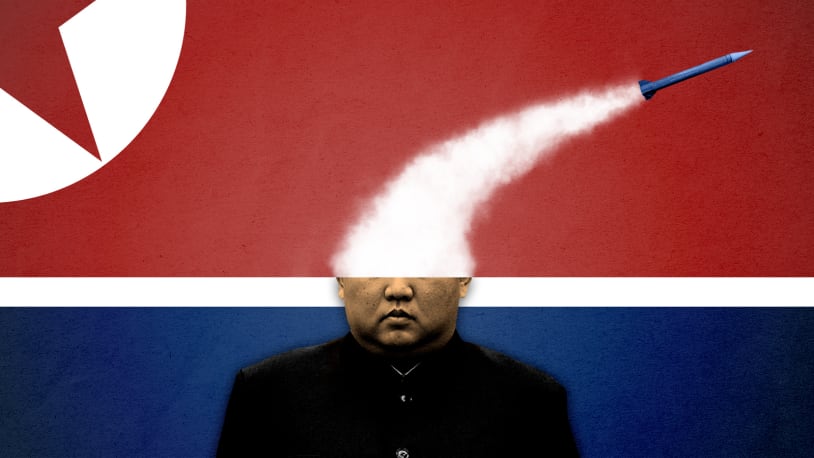
The North Korean nuclear threat, explained
A nuclear menace is rearing its head once again on the Korean peninsula. North Korea is making noises about growing its atomic arsenal, and perhaps even using the fearsome weapons against perceived threats from the United States. Leader Kim Jong Un has been repeatedly photographed inspecting long-range missiles with his daughter, and in late November, he vowed to “possess the world’s most powerful strategic force.” On top of this, a recent “flurry of missile launches” suggests the country is about to test a new nuclear weapon, Reuters reports.
All these developments have raised alarms in the U.S. and South Korea. Why is Kim raising the nuclear threat level? Is the U.S. in danger? And what can be done? Here’s everything you need to know:
Why does North Korea want nukes?
Kim worries that his government will be overthrown by rivals like the U.S. and South Korea. Doug Bandow at Foreign Policy writes that the North Korean leader’s goal is “avoiding domination by another power” — and specifically to protect the country from America — and nuclear weapons are a hedge against that possibility. Indeed, the country’s state media says recent missile tests are a response to U.S. naval exercises near the Korean Peninsula, which Pyongyang considered an invasion rehearsal.
Even in an authoritarian regime, there are still political considerations. Kim’s support of the nuclear program “is as much about bolstering his popularity as it is his security,” Jean Mackenzie writes for the BBC. The economy may be faltering and its contacts with the world all but nonexistent, but “weapons are one area where Mr. Kim can show his people he is making progress.”
How well-developed is the arsenal?
The most recent estimates suggest North Korea possesses enough nuclear fuel for 50 weapons, The New York Times reports, and could produce a half-dozen or so weapons a year. Earlier this century, the country carried out a series of “increasingly sophisticated underground nuclear tests” — the last, in 2017, involved a device with an estimated explosive power of 50 to 300 kilotons. That’s big: “A mere 100 kilotons would make the test six times as powerful as the bomb dropped on Hiroshima in 1945.”
What do the missile tests tell us?
Nuclear weapons don’t mean much without a means of delivering them to a target. That’s what makes the country’s recent missile tests so alarming. “Kim has fired off a record number of missiles this year to demonstrate his weapons advances,” Bloomberg reports, a tally that also includes more than 80 solid-fuel ballistic missile launches since 2019, two hypersonic missile tests in the last two years, and the October launch of an intermediate-range rocket that flew over Japan. The country appears intent on showing it can hurt its rivals: A barrage of tests in September and October was designed to show North Korea can use tactical nuclear weapons to “wipe out” South Korean and U.S. targets, The Associated Press reports.
Does that mean North Korea has all the technology figured out?
Nobody really knows for certain. One major question is whether North Korea can fit nuclear warheads on those new missiles. Al Jazeera reports that a U.N. panel reported in 2021 that one assessment has concluded “that North Korea does indeed have the ability to mount nuclear warheads on its short, medium, and long-range ballistic missiles.” There are other technical questions that outsiders don’t know if North Korea has solved.
Is the U.S. actually in danger, then?
North Korea might possess the technical capability to attack America. A mid-November launch of an intercontinental ballistic missile demonstrated the range to hit the U.S. mainland, NBC reports, although that would depend on the weight of any actual warhead fitted to the missile.
The other question is whether North Korea would ever actually choose to attack the United States. There is some skepticism on that front. Yes, North Korea eventually wants to reunite with — and rule — America’s ally, South Korea. But the University of Utah’s Clint Work wrote in 2018 for The Washington Post that self-preservation is the key to Kim’s decision-making: “North Korea won’t attack the United States unless attacked first.”
What can be done?
All of this comes amid debate in the U.S. and South Korea about whether to keep pursuing North Korea’s “denuclearization” — a policy the countries have followed for decades — or if it’s time to formally recognize that the country is a nuclear state. “Publicly acknowledging this reality is, however, fraught with peril for countries such as the United States,” Paula Hancocks writes for CNN. Experts say that giving up on persuading North Korea to abandon its nuclear weapons might actually spark a larger arms race in Asia.
The reality, though, is that Kim Jong Un views his country’s nuclear program “as critical leverage with the world,” The Washington Post reports. North Korea doesn’t want to even hold talks with the U.S. unless it gets sanctions relief and security guarantees. Even then, Kim has vowed “absolutely no denuclearization, no negotiation, and no bargaining chip to trade.” If that’s true, the North Korean nuclear threat may be permanent.
A nuclear menace is rearing its head once again on the Korean peninsula. North Korea is making noises about growing its atomic arsenal, and perhaps even using the fearsome weapons against perceived threats from the United States. Leader Kim Jong Un has been repeatedly photographed inspecting long-range missiles with his daughter, and in late November,…
A nuclear menace is rearing its head once again on the Korean peninsula. North Korea is making noises about growing its atomic arsenal, and perhaps even using the fearsome weapons against perceived threats from the United States. Leader Kim Jong Un has been repeatedly photographed inspecting long-range missiles with his daughter, and in late November,…